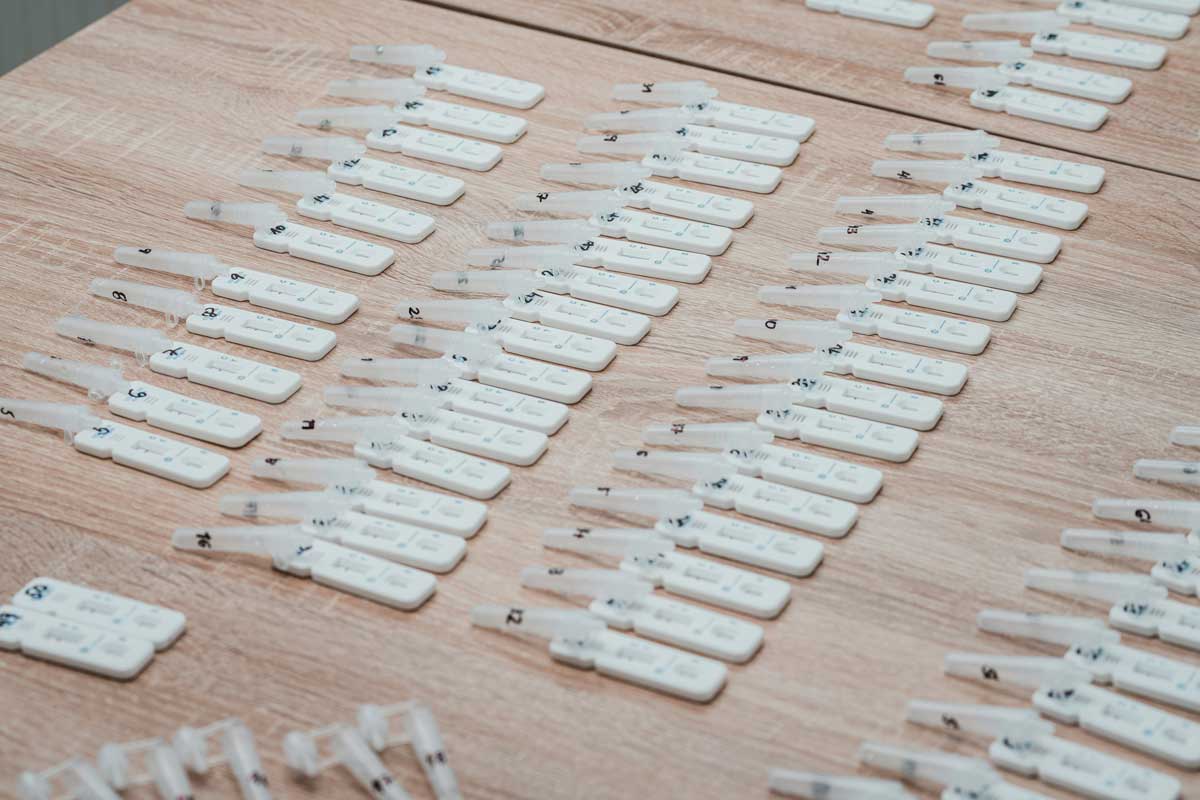Do COVID-19 tests still work if they are out of date?
Some lateral flow or rapid antigen tests may still be effective after their printed expiry date. The question is, for how long?
- 20 December 2024
- 5 min read
- by Linda Geddes

If you’ve got a sore throat, cough, fever, or other such symptoms suggesting you may have caught COVID-19, a sensible step is to take a swab from your nose and/or throat and do a rapid antigen test.
Also known as lateral flow tests, these plastic cassettes became an everyday feature of many people’s lives at the peak of the COVID-19 pandemic, and you may still have boxes of them stashed at the back of your bathroom cupboard.
But with many such tests having passed their expiry dates, you may be wondering if they’re still likely to work and if you can trust the clean bill of health they’ve apparently provided.
“The antibodies in these tests are biological materials, and like anything you’d have in your fridge with a shelf life, they only have a certain time before they begin to degrade.”
- Dr Chris Hand, co-founder of Abingdon Health
How COVID-19 tests work
Lateral flow tests are simple devices designed to detect the presence of a target ‘analyte’ – in this case the SARS-CoV-2 virus – in a liquid sample without the need for specialised, costly equipment.
They do this by incorporating reactive molecules called antibodies into the plastic cartridge. These bind to a molecule, such as a protein, on the virus or substance of interest, triggering a colour-change. This shows up as a red or blue line if the target is present.
“The antibodies in these tests are biological materials, and like anything you’d have in your fridge with a shelf life, they only have a certain time before they begin to degrade,” says Dr Chris Hand, co-founder of Abingdon Health, a British company that manufactures lateral flow tests for multiple applications. The way manufacturers predict how long the materials in their tests will last before they lose their abilities to bind and work properly is initially through something called accelerated stability testing.
This involves exposing them to higher temperatures, which accelerate the degradation process, measuring the accuracy of the tests at different time points, and then using this data to calculate how long they are likely to remain effective for at room temperature.
These calculations are the basis for those expiry dates printed on the boxes of lateral flow tests produced at the peak of the COVID-19 pandemic.
“Like anything with a shelf life, you can use it the day after it goes off, and that would be a choice for the individual, but a manufacturer would definitely say, ‘you can't use it’, because they wouldn't have data to support that.”
- Dr Chris Hand, co-founder of Abingdon Health
Extended shelf lives
Since then, most manufacturers have conducted follow-up tests to confirm the accuracy of those predicted expiry dates. In some cases, this has led to extended expiry dates being issued.
For individuals living in the United States, there is a simple means of checking whether the manufacturer of their COVID-19 tests has provided data showing that their shelf-life is longer than predicted when the test was first authorised: the US Food and Drug Administration publishes a table that people can check the lot number of their test kits against.
However, this only applies to COVID-19 tests that have been authorised for distribution in the US, an FDA spokesperson told VaccinesWork. In other countries, consumers must search for information on individual manufacturers’ websites or rely on guesswork to decide if their tests are still likely to detect the virus.
Most manufacturers would not recommend this. “Like anything with a shelf life, you can use it the day after it goes off, and that would be a choice for the individual, but a manufacturer would definitely say, ‘you can't use it’, because they wouldn't have data to support that,” says Hand.
“The idea of the control line on a test is to show that things are working properly, but it's not going to give you a definite result – it just shows that the test has run properly, not necessarily that it has worked properly.”
The more time elapses, the more the antibodies in the tests are likely to degrade, but precisely when that cut-off point will be is difficult to say.
Have you read?
Lines of accuracy
In one study, researchers led by Mary Jane Varth and Omar Abdullah at Johns Hopkins University in Baltimore, assessed the accuracy of expired BinaxNOW COVID-19 tests 27 months post-manufacture and five months past their FDA extended expiry dates, using different concentrations of the XBB.1.5 COVID-19 variant virus.
Expired tests still accurately detected the virus, but had fainter lines than the unexpired tests at each viral concentration and were only just visible when concentrations at the limit of detection – the smallest amount of virus that should deliver a positive result – were used.
“This observation may have implications on the user’s ability to accurately interpret the results, particularly in low-resource settings or for individuals with limited experience in performing and interpreting rapid antigen tests,” the study authors said.
They also stressed that the findings may not be generalisable to other rapid antigen tests, or to other COVID-19 variants.
The rate at which the antibodies in tests degrade is also not necessarily linear – especially if they’ve been stored near a radiator or exposed to other temperature shocks, says Hand.
The consequences of using a degraded test could be serious. “If a test is too old, it means that the antibodies that form the line may not still have their binding abilities, and you might get a false negative result because the line wouldn't form,” says Hand. “You’d think you hadn't got COVID or whatever else you were testing for, when you actually had.”








